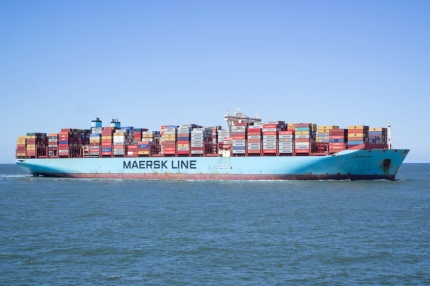Wall Street analysts would have you believe that the global supply chain problems will be over with soon.
Spoiler alert: they will not.
We have many months before the supply chain issues abate. The demand for physical goods that began during the pandemic only highlighted the infrastructure shortcomings that could take years to fix.
Investors who listened to Wall Street have dumped shipping stocks en masse, only serving to create an opportunity for investors that actually understand what is going on.

The world’s largest container lines made extraordinary amounts of money in 2021. And 2022 will be another hugely profitable year for the world’s biggest shipping companies, as freight rates along the busiest shipping lanes are expected to continue rising.
Like commodities companies reaping profits from exceptionally high commodities prices, shipping firms are rolling in cash while others down the supply chain fight to maintain margins.
Big Profits for Shipping Firms
Although shipping lines are facing much steeper fuel, vessel, and insurance costs, rate increases for shipping will continue to swell the revenues and profits made by the industry’s giants. Maritime consultancy Drewry estimates their combined earnings before interest and tax will reach $300 billion this year—a 40% jump from the $214 billion made in 2021.
Drewry’s forecast a further 39% increase in average global freight rates (a mix of spot and contract rates) for 2022, following a 110% spike in 2021.
Keep in mind that last year’s profits of $214 billion dwarfed anything the industry had ever seen before.
Freights rates have stabilized—but at high levels. For example, the key trans-Pacific route from China to the U.S. West Coast has seen rates drop for six successive weeks before leveling off at $15,552 per forth-foot equivalent unit (FEU) by the end of April, according to the Freightos Baltic Index (FBX).
But this is still 162% higher than the same rate a year ago!
While spot rates have declined, contract rates the biggest shippers (think Walmart, etc.) pay for longer periods have continued to climb—up 11% in April and more than doubling year-over-year, according to the Xeneta Shipping Index.
The world’s largest container shipping line, Denmark’s AP Moeller Maersk (AMKBY), and the Swiss logistics giant Kuehne & Nagel (KHNGY) say that freight rates will begin to ease in the second half of this year, but they could take years to normalize.
Both believe that by 2025, as the supply chain finally normalizes, freight rates will gradually decline to a level just 15% above pre-pandemic levels.
Shipping Industry 101
Some of you may be wondering how—with the price of bunker fuel at all-time highs—profits can still be soaring. Let me explain briefly.
With fuel costs so high, ships slow down. Slow steaming requires considerably less fuel. This is called the “cube-rule”: slow a boat by half, and it will use 1/8th the fuel it would at full speed.
Slowing a boat down obviously means it takes longer to sail from A to B…which also means it costs more to hire a ship, since rental is a daily charge. Charter rates have risen between 20-35%.
This is great news for ship owners. First it means they get paid more because their boats earn a higher rental on longer voyages. Second, for every knot that global shipping slows, an estimated 6% of the global fleet is made unavailable. In other words, slower ships mean fewer ships available, which pushes up charter rates.
So, shipping companies earn more, but goods reach markets slower, meaning you pay more for goods.
Another dominant driver of freight rates—and shipping company profits—since the start of the pandemic has been the capacity constraints at many ports. Lower port productivity has meant the effective capacity of container shipping lines was 17% below potential last year, and will probably remain 15% below potential this year, according to Drewry’s forecasts.
Shipping Investment
The bottom line is that vessel capacity is one of just three significant bottlenecks faced by the industry. The other two are capacity at U.S. ports (specifically Los Angeles and Long Beach) and the required handling capacity (that is, the number of truckers available) to move goods inland.
For the global supply chain headache to end, all three bottlenecks will need to be solved in sync. Good luck with that—for at least a few years.
For now, I believe shipping a good place to park some money. The easiest way to do this is through buying an ETF. My specific recommendation is the SonicShares Global Shipping ETF (BOAT).
BOAT is up more than 31% in the past year and 5.15% year-to-date, despite a terrible stock market environment. The three most recent dividends paid (September, December, and March) are $0.052, $0.352, and $0.778 respectively.
With the ongoing market turmoil, this is a good ETF to get into a little at a time on big down days, at any price in the low $30s.





